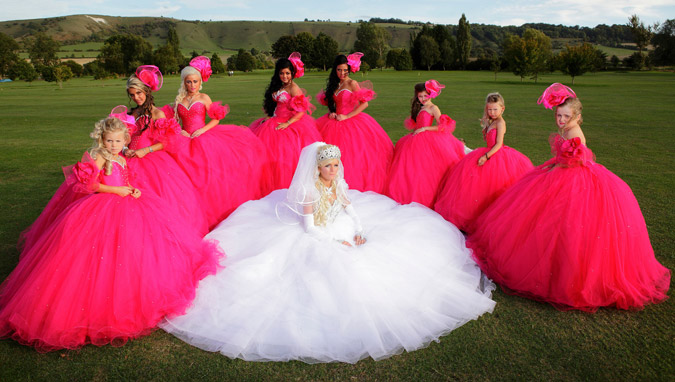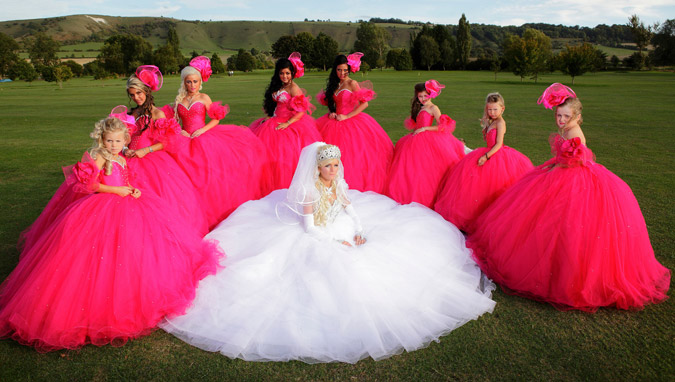Andy Trainer
6 Aug 2012
How to Project Manage a Wedding
Some people say otherwise, but a wedding *is* a project. It has a set purpose and the project has an end date. It has a project team, project manager and most certainly has a budget. Certain milestones must be achieved at certain times in order for the goal to be reached. Later goals depend on achieving earlier ones.
So, you could be a PM professional with a wedding to plan; or you might have found us because you are a bride-to-be looking for structure to tackle this massive task. You could take our 1-day Project Management course, or even our PRINCE2 qualifications to really know how to manage your wedding! Following on from our popular Project Manage Your Life, here’s our simple guide to project managing a wedding:

Benefits Criteria
The first thing to do is identify the benefits criteria that will define project success. These can be such things as:
- Everyone being where they should be at the right times
- Happy guests
- No family conflict (yes, it’s a factor)
- (For the bride), feeling beautiful
- Having a stress-less wedding planning experience
- Choosing wedding suppliers you can trust to deliver
Assemble Your Project team
Next, structure your project board and team:
- Team managers – the best man and maid of honour will have their own stages to plan, i.e. the stag and hen nights.
- Sponsor/Senior User – the great thing about project managing your own wedding is that you as bride and groom are your own sponsors/users. You are the ones who have to make the highest-level decisions, and you won’t have to provide all those pesky Project Manager – Project Board reports. If your parents are providing funding, you need to decide now if they are sponsors (to be consulted when making decisions).
- Bridesmaids, groomsmen, siblings and other key figures may also have TM responsibilities: Assembling a team using project management techniques now WILL prevent misunderstandings and upset later on. This is the time to check everyone understands how involved you would like them to be.
The Project Plan
Now you need a project plan. This is basically an extended version of the usual wedding to-do list but with some important extensions:
- First of all, identify stages in planning, and what needs to be done during those stages. You will probably find that the early stages are longer spans of time; and later stages get increasingly shorter as the wedding approaches…!
- At the end of each stage, a milestone will have been achieved, e.g. the hen and stag dos have taken place. The transition from one stage to the next is called the stage boundary.
- Stages will include dependencies based on what has been achieved so far. For example, parts of your budget may depend on what is spent/saved earlier on. Identifying these dependencies will keep you focused and influence your buying decisions.
- As a general rule, plan by working backwards from your goal and the definitions of success you’ve put in place, through each step needed to get there. To make sure your timescales are realistic, speak to other brides. Tasks that seem simple, e.g. buying rings, can prove trickier as you realise how much choice there is out there.
- If you want to step your wedding planning up another PM notch, there are various Apps and websites that can help you plan, assign tasks, and get updates, e.g. Tracky.com.
Budget and Tolerances
One of the benefits of using methods such as PRINCE2 for project management is that all budgets for time, resources and costs are set with agreed tolerances. Now, of course, once you’ve set the date, there will be no tolerance for time! So just make sure your stage boundaries are set as early as possible, so any milestones that take longer than anticipated to reach can be made up for later on.
It’s really important to set your budget with tolerances; and to break it down to individual items. You only need to watch one episode of Don’t Tell the Bride (not that we watch Don’t Tell the Bride, of course!) to see how easy it is to let every little thing sneak just over the budget – and how there are always unexpected expenses missed out of your plan. You can therefore assign a budget to each part of the wedding, with an agreed upper tolerance. The total of these upper tolerances should be close to or exactly your real total maximum budget.
Controlling Change
PRINCE2 has a defined philosophy on accepting and controlling change. You should approach your project (your wedding) with the knowledge that your careful plans WILL change along the way. Hence the need for tolerances and dependencies.
When change occurs, e.g. a supplier cancels a booking, don’t just react. Sit down, with your plan, and work backwards again to the point you now know you are at. This stops your project going too far off course – it reminds you which later stages are affected by this change and gives you the control back.
We hope you won't need it, but here are some tips for closing a project early.
Project Managing Your Wedding – in a Nutshell
Sounds like a lot of structure, doesn’t it? Perhaps you don’t want to go as far as to create a whole project plan. The 3 main things to remember are:
- That making detailed plans (with tolerances) will give you vital peace of mind when you’re halfway through the process.
- Change will happen - but you will be prepared not just to react but to re-plan.
- HAVE FUN! Wedding planning involves a special kind of controlled fun. By embracing project management, you’ll be ready to react to any challenges without compromising your perfect wedding day.
